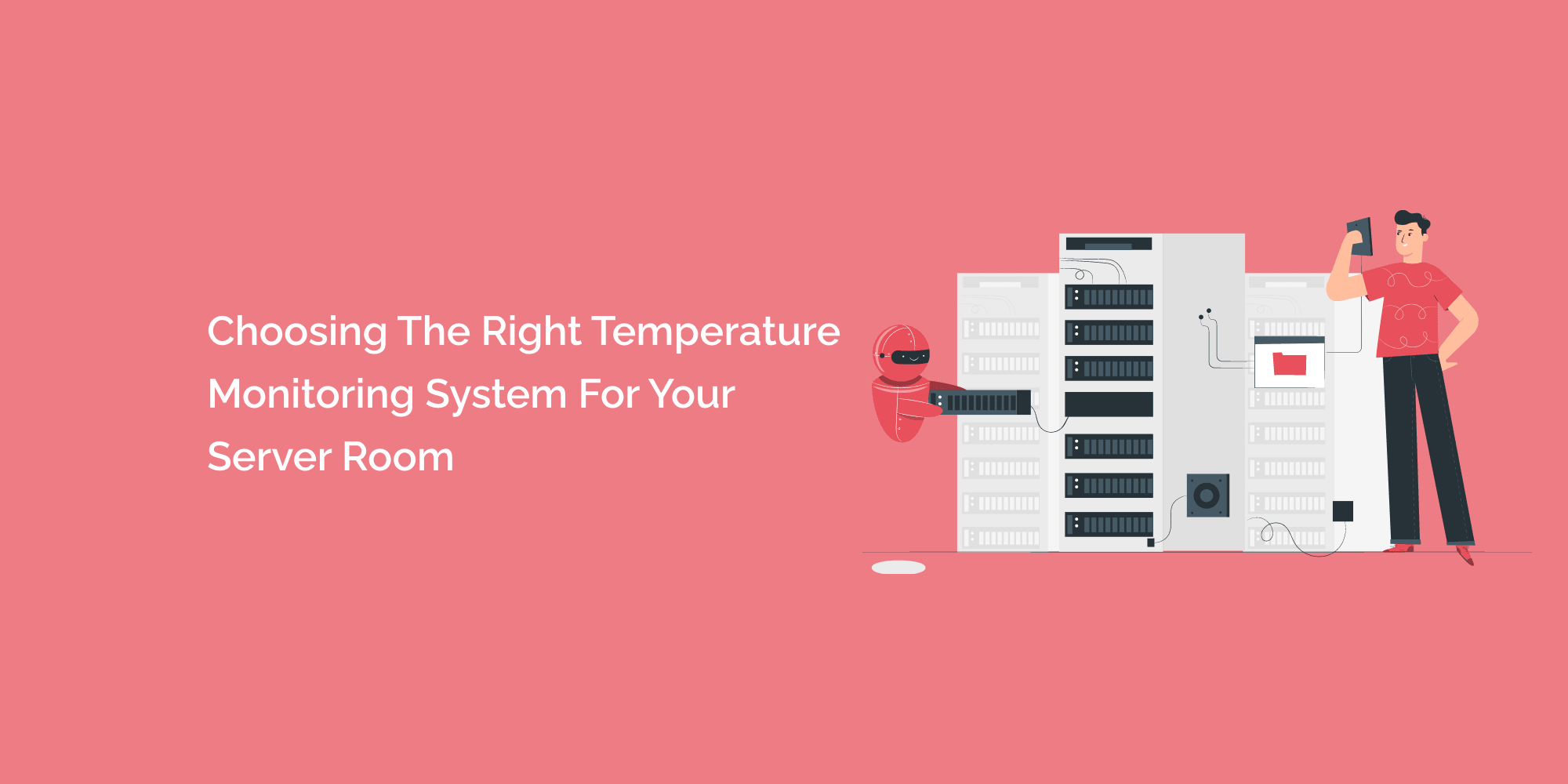Temperature monitoring is a critical aspect of maintaining optimal conditions in a server room. As the heart of your organization's IT infrastructure, the server room houses the equipment that powers your digital operations. Effective temperature monitoring ensures that your servers operate within safe temperature ranges, minimizing the risk of equipment failure and downtime.
This blog will guide you through the process of selecting the right temperature monitoring system for your server room, considering factors such as accuracy, scalability, connectivity, and ease of use.
Understanding the Importance of Temperature Monitoring in Server Rooms
The Impact of Temperature on Server Performance
Explaining the correlation between temperature and server performance, emphasizing the potential risks of inadequate temperature management, such as thermal throttling, reduced equipment lifespan, and increased energy consumption.
Compliance Requirements and Best Practices
Discussing the importance of temperature monitoring in meeting compliance requirements, industry standards, and best practices, such as those outlined by organizations like ASHRAE (American Society of Heating, Refrigerating and Air-Conditioning Engineers).
Key Factors to Consider When Choosing a Temperature Monitoring System
Accuracy and Precision
Explaining the importance of accurate temperature measurements and the potential consequences of relying on unreliable or imprecise monitoring systems. Discussing the different types of temperature sensors available and their respective accuracy levels.
Scalability and Flexibility
Highlighting the significance of a temperature monitoring system that can scale with your organization's needs. Exploring options for systems that can accommodate a growing number of sensors and offer flexibility in terms of deployment and integration with existing infrastructure.
Connectivity and Data Accessibility
Discussing the various connectivity options available, such as wired and wireless systems, and the benefits of real-time data access. Exploring the advantages of cloud-based monitoring solutions and their ability to provide remote access to temperature data.
Alerting and Notification Capabilities
Emphasizing the importance of timely alerts and notifications when temperature thresholds are exceeded. Discussing the types of alerts and notifications that can be configured, including email, SMS, and mobile app notifications.
Ease of Use and User Interface
Exploring the importance of a user-friendly interface and intuitive controls. Discussing the benefits of systems that offer centralized monitoring and configuration options, making it easier for administrators to manage and monitor temperature data effectively.
Types of Temperature Monitoring Systems
Standalone Temperature Monitoring Systems
Explaining the features and benefits of standalone temperature monitoring systems, which typically consist of a monitoring unit connected to sensors placed strategically in the server room. Discussing their ease of installation and affordability.
Network-Integrated Temperature Monitoring Systems
Highlighting the advantages of network-integrated temperature monitoring systems, which allow for centralized monitoring and management of temperature data. Discussing their compatibility with existing network infrastructure and integration with other monitoring tools.
Wireless Temperature Monitoring Systems
Exploring the benefits of wireless temperature monitoring systems, which eliminate the need for extensive cabling and provide greater flexibility in sensor placement. Discussing their scalability and ease of installation.
Cloud-Based Temperature Monitoring Systems
Exploring the advantages of cloud-based temperature monitoring systems, including remote access to temperature data, scalability, and automatic data backups. Discussing the potential security considerations and data privacy measures associated with cloud-based solutions.
Conclusion
Choosing the right temperature monitoring system is crucial for maintaining optimal conditions in your server room and ensuring the reliable and efficient operation of your IT infrastructure. By considering factors such as accuracy, scalability, connectivity, and ease of use, you can select a system that meets your organization's specific requirements.
Whether you opt for a standalone, network-integrated, wireless, or cloud-based temperature monitoring system, the ultimate goal is to ensure accurate and real-time monitoring of temperature conditions in your server room. A well-chosen system will provide you with the necessary data and alerts to proactively address temperature fluctuations, mitigate risks, and prevent equipment failures.
Accuracy and precision are vital when selecting a temperature monitoring system. Choose sensors that offer high accuracy levels to ensure reliable temperature measurements. Scalability and flexibility are also essential considerations, as your server room may expand in the future. Select a system that can accommodate a growing number of sensors and integrates easily with your existing infrastructure.
Connectivity and data accessibility are crucial in today's digital landscape. Look for systems that offer both wired and wireless connectivity options, enabling seamless data transfer. Cloud-based solutions provide the added advantage of remote access to temperature data, allowing you to monitor conditions from anywhere at any time.
A temperature monitoring system should offer robust alerting and notification capabilities. Ensure that it can promptly notify you via email, SMS, or mobile app notifications when temperature thresholds are exceeded. This enables quick response and intervention to prevent equipment damage or downtime.
The ease of use and user interface of the temperature monitoring system are essential for efficient management. Choose a system with an intuitive interface that simplifies configuration and monitoring tasks. Centralized monitoring and configuration options streamline the process and enhance user experience.
Consider the different types of temperature monitoring systems available. Standalone systems are cost-effective and easy to install, while network-integrated systems provide centralized management. Wireless systems offer flexibility in sensor placement, and cloud-based solutions provide remote access and scalability.
In conclusion, choosing the right temperature monitoring system for your server room is crucial to maintaining optimal conditions and preventing equipment failures. Consider factors such as accuracy, scalability, connectivity, and ease of use when making your decision. By selecting a reliable and efficient system, you can ensure the continuous operation of your IT infrastructure, mitigate risks, and minimize downtime. Invest in a temperature monitoring system that meets your organization's specific requirements and contributes to the overall reliability and efficiency of your server room operations.








